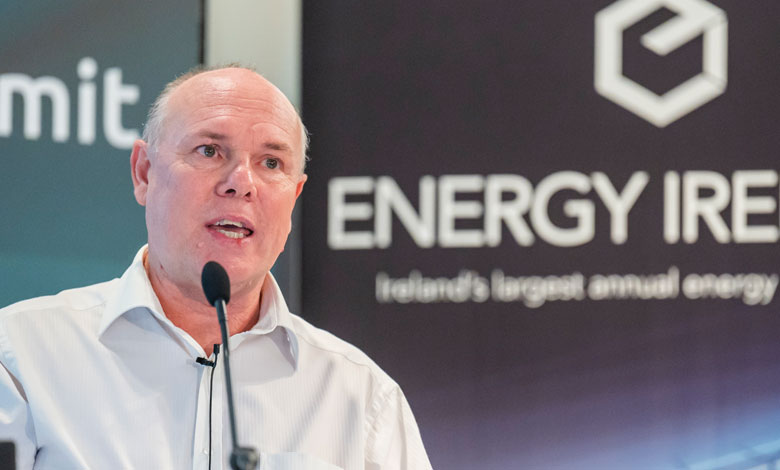
Celebrating 20 years of growth and promoting the move to a greener future for Northern Ireland
27th May 2025Storage required to manage renewable oversupply
27th May 2025Achieving net gain from offshore wind farms

Andrew Edwards-Jones, social science researcher at Plymouth Marine Laboratory (PML), tells agendaNi about potential measures that could enable offshore wind developments to improve the environments and habitats they threaten.
Stakeholders representing industry, government, academia, and civil society believe “net gain should be mandated for all offshore wind farm developments”, according to research carried out by PML. It shows that 86 per cent of stakeholders believe marine net gain (MNG) targets should include species within assessments, with participants favouring inclusion of fish, marine mammals, and invertebrates, with less emphasis on birds.
To measure MNG, stakeholders indicated that a new metric for the offshore marine environment should be specifically designed, and an industry levy contribution to a strategic fund should be created. A terrestrial biodiversity net gain (BNG) metric is currently used in England by the Department for the Environment, Food and Rural Affairs, but “very few” participants favoured this. Stakeholders also suggested combining the metric and levy “depending on the scale of the net gain required”.
Edwards-Jones asserts: “There needs to be increased understanding of what inputs are needed by organisations expected to meet net gain requirements, with biodiversity, habitat, and modelling data identified as priorities.”
Contextualising the research, he says: “We are in a period of rapid expansion of global offshore wind power with deployment rates set to accelerate as nations attempt to meet net zero targets.”
The UK Government has set a 60GW target for operating capacity by 2030, while the Irish Government has set a 37GW target by 2050. Edwards-Jones asserts: “It is important to understand the impacts of this sector growth on the environment and biodiversity.”
Net gain
He indicates that sector growth threatens the environment and biodiversity, and outlines the importance of introducing measures to facilitate net gain in offshore developments. Net gain is “an approach to development that leaves the environment in a better state than before that development started”.
He explains that BNG is where developers are encouraged “to provide an increase in appropriate natural habitat and ecological features over and above that being affected”, and that MNG is the application of BNG in a marine setting.
On the ecosystem services that should be used to estimate environmental net gain impacts and the benefits of offshore wind farms, 100 per cent of stakeholders said fisheries and wild fish stocks were important or very important. It was followed by maintaining nursery habitats (95 per cent), aquaculture (78 per cent), and climate regulation (73 per cent).
“We are in a period of rapid expansion of global offshore wind power with deployment rates set to accelerate as nations attempt to meet net zero targets.”
Underwater noise was deemed the priority marine pressure for the development of net gain targets, with 82 per cent saying it was important or very important. This was followed by dredging (76 per cent), physical structures (71 per cent), marine litter and debris (71 per cent), and line and net fishing (70 per cent).
For MNG to incentivise active restoration measures, Edwards-Jones says: “Stakeholders prioritised actions to restore or enhance shellfish or mussel beds and invertebrate habitats, as well as actions supporting plankton and restoration of subtidal sediments.
“One participant rejected this idea of strategic priorities on the basis that making something different a little better somewhere else is not really mitigation. Rather, they felt that priorities should be set by where the development is and what effects it has in that specific location.”
PML’s research found that 83 per cent are in favour of net gain actions being considered at the decommissioning stage of offshore wind structures. Such actions included, complete removal of all structures, abandonment of structures, partial removal, toppling of all structures, and relocation.
Edwards-Jones adds: “They encourage solutions that best fit site conditions and character, with abandonment of structures also considered positively as an option for biodiversity and environmental benefits.
“There were several views that the best solution depends on the nature of the structure and its location. It was suggested that only complete removal legitimately fits with the net gain concept.”
Outlining how MNG can incentivise strategic interventions, Edwards-Jones says: “As suitable space on the seabed becomes more limited, and competition for space increases, it is anticipated that there will be some offshore areas where infrastructure could be required to co-exist.”
Seaweed farming was found to be the most feasible activity for co-existence with fixed wind farms, with 88 per cent of participants agreeing or strongly agreeing with this assertion. This was followed by mussel farming at 83 per cent, and oyster farming at 77 per cent while trawling was deemed least feasible at 18 per cent.
In contrast, 65 per cent agreed or strongly agreed that trawling was a feasible activity for co-existence for floating wind farms. Line and net fishing was next at 64 per cent, with hydrocarbon/carbon capture devices also at 64 per cent.
Moving forward, Edwards-Jones says that MNG should be considered in several recently launched Irish policies or frameworks including the Maritime Area Consent regime, the National Marine Planning Framework, and future framework for offshore renewable energy. He also notes that there is no national policy or legislation in Ireland on BNG, but points out that it is specifically referenced in the plans of numerous local authorities and national agencies.
Edwards-Jones concludes: “Environmental Impact Assessments (EIA) could, much more usefully, declare an aim of achieving BNG. In addition to the mitigation hierarchy, an EIA could propose measures for enhancing ecological values – so above and beyond addressing impacts.”
